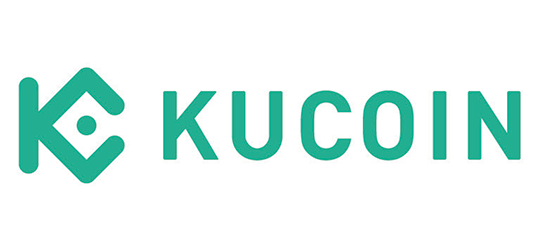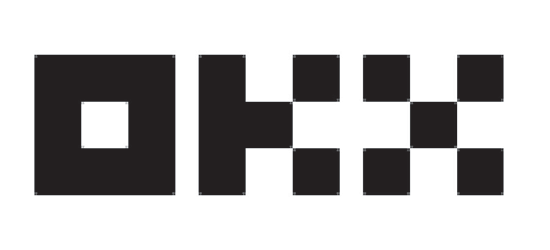
Top 10 Web3 Social Media Platforms 2023
Discover the future of online interaction with our pick of the top 10 Web3 social platforms prioritizing decentralization, user ownership, and crypto integration
What’s Wrong With Web2 Social Media?
In the current era characterized by widespread digitalization, the World Wide Web has become an integral component that has deeply penetrated every facet of our lives. Whether we're banking, connecting with family, dating, or simply consuming content, the web's influence is undeniable. Historically, much of this influence emerged from the era of Web2.0 or the traditional internet.
It was during this period that we witnessed the meteoric rise of social media, transforming the way we share, communicate, and conduct business. Platforms like Facebook, TikTok, Twitter, Instagram have not only defined the social media landscape but have also monopolized it. As these corporations gained prominence, the once free and open-world web began to resemble a series of gated communities owned by a few corporate giants. The consequence? Issues ranging from potential data security threats to subtle algorithmic biases in content presentation.
Web3 as the next frontier of the digital world, promises a shift in how we approach online interactions. Unlike its predecessor, Web3 is decentralized by design, deploying a groundbreaking blockchain technology.
This evolution into Web3 has also spurred the growth of decentralized social media platforms, addressing many concerns posed by their Web2 predecessors. These new platforms prioritize user data ownership, protection, and creative freedom, addressing the demands of a new generation of digital natives.
In this article, we will delve deeper into the world of Web3 social media platforms, highlighting their differences, and introducing the top ten contenders worthy of attention.
What is Web3 Social Media?
Decentralized social networks leverage blockchain technology, allowing users to freely share, publish, and disseminate content across vast audiences. What differentiates them from traditional platforms is their ability to be decentralized and thus resistant to censorship and control. But what does this mean in practice?

Imagine traditional social media platforms as centralized hubs, maintaining user data, content, and algorithms on specific databases. These centralized systems not only introduce vulnerability, but they also grant undue power to a few entities over what is seen and shared. On the other hand, decentralized social networks are built on a distributed ledger system known as blockchain. More specifically, they are a subset of decentralized applications (dapps) built on smart contracts, which essentially define the operational framework or business logic of these platforms.
Instead of relying on a single server or database, decentralized social media operates on a global peer-to-peer network made up of thousands of computers, known as 'nodes'. This decentralization ensures that even if some nodes fail, the overall network remains unaffected, offering resilience against failures and outages that centralized platforms can't promise.
What Makes Web3 Social Media So Appealing?
One of the key advantages of decentralized social networks is enhanced user control and autonomy. Users aren't just passive participants - they actively decide what content to post or remove based on their values. This user-centric approach ensures that content is genuinely user-owned, preventing arbitrary deletions by third parties. Such autonomy empowers individuals, for instance, to share unsettling footage from conflict zones without fear of unwarranted censorship.
Moreover, monetization in Web3 platforms takes a fresh approach. The absence of traditional advertising revenue is substituted by native crypto tokens. These tokens not only hold intrinsic value but also serve as a medium for users to reward their favorite creators.
Moreover, decentralized platforms often practice collective decision-making through a decentralized governance model. Rather than a single entity dictating terms, users collectively shape the development of the platform and decide on acceptable content standards.
Top Ten Web3 Social Media Platforms
Now that we have an understanding of the Web3 social media essence, let's go through the most popular web3 social media networks worth looking at.
#1 - Lens Protocol

Source and Copyright: © Lens Protocol
In 2022, the team behind Aave, known for their contributions to the DeFi liquidity protocol space, rolled out Lens Protocol. This open-source, blockchain-based social graph was developed to provide content creators and creatives with a more decentralized platform where they could have greater control over their profiles, content, and data.
Utilizing Polygon's proof-of-stake blockchain as its foundation, Lens Protocol has introduced tools aiming to facilitate community interactions. For instance, "mirroring" is their rendition of the retweet mechanism, aiming to widen content visibility.
A notable technical feature of Lens is its provision for users to mint their unique handles as NFTs, which can then be transferred to their respective crypto wallets. These Lens NFTs are designed to be compatible with other decentralized applications (dApps) and smart contracts within the LensVerse ecosystem. For those in the trading community, these NFTs can be listed on secondary marketplaces, like Opensea.
#2 - Mastodon
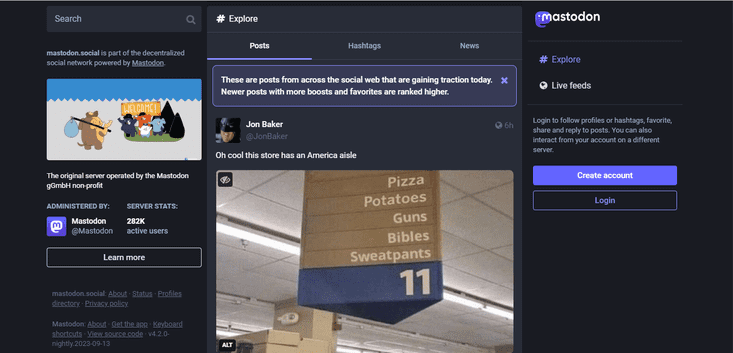
Source and Copyright: © Mastodon
Established in 2016, Mastodon is an open-source microblogging platform, having amassed over three million users globally. Unlike conventional platforms, it allows its users to share a wide range of content, from text to GIFs, images, and videos. What sets Mastodon apart is its chronological feed, granting users a transparent, algorithm-free content-viewing experience, and empowering them to curate what populates their timelines.
Mastodon is made up of interconnected servers, known as "instances." This structure gives users the unique advantage of selecting a server (or "instance") that mirrors their individual values or interests, leading to the creation of more diverse online communities.
Drawing parallels to Twitter, Mastodon’s interface permits users to disseminate short messages, termed "toots", and to interact through replies, favorites, and boosts—a function similar to retweets.
#3 - Minds
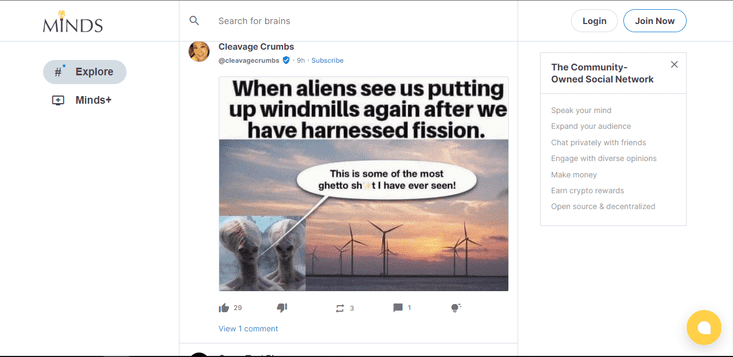
Source and Copyright: © Minds
Minds stands out as a decentralized, open-source social media platform that emphasizes user privacy, freedom of expression, and incentivizing content creation. Built on the Ethereum blockchain, Minds utilizes its native currency, Minds Tokens.
Minds incorporate elements familiar to mainstream social media users—such as news feeds, group chats, and direct messaging.
While Minds positions itself as a contender to Facebook, its monetization strategies draw parallels to Patreon's model. Active participation, such as content uploads or bringing new users earn rewards in the form of Minds tokens. These tokens can be reinvested into the platform for promotional activities or channeled to support other content creators by subscribing to their feeds.
#4 - Dtube

Source and Copyright: © DTube
DTube is a community-driven video platform where user interactions, such as voting on videos, directly reward creators, curators, and viewers with cryptocurrency While it mirrors YouTube in its functions, DTube's foundation in blockchain technology amplifies privacy, security, and freedom of speech.
The platform is versatile, supporting a range of video formats and even live streaming. Initially, DTube used the STEEM blockchain and rewarded users in STEEM tokens, but they later migrated to their own Avalon blockchain with the DTube Coin (DTC).
DTube does not have a traditional ad model like YouTube. Instead, the rewards come from the blockchain mechanism, where viewers can upvote content they like, which results in cryptocurrency rewards for the creators. Additionally, users can reinvest their earnings to enhance their content's reach.
#5 - Chingari
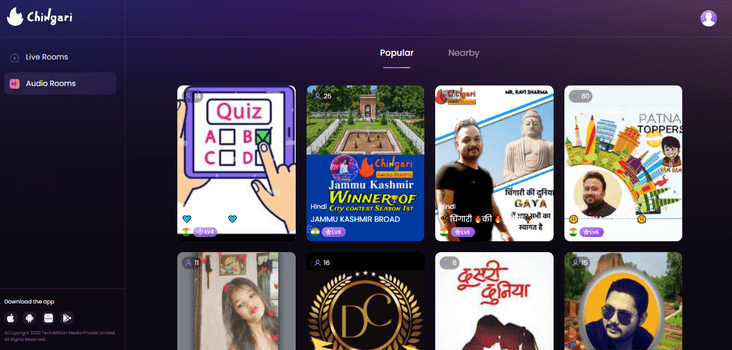
Source and Copyright: © Chingari
Chingari is a short video-sharing platform, which was founded in India in 2018. Its popularity surged in 2020 after India's ban on TikTok and other Chinese applications.
This mobile app empowers users to produce unique videos and apply augmented reality filters. Chingari stands out for its emphasis on regional content and languages. It caters to India's linguistic diversity by supporting multiple local languages. Furthermore, it offers content creators avenues to generate revenue, mainly through brand collaborations and partnerships.
Recently, Chingari moved to Aptos as its primary layer-1, transitioning away from Solana. The application is now accessible in countries including India, the United States, the United Arab Emirates, Indonesia, and Turkey.
#6 - Audius
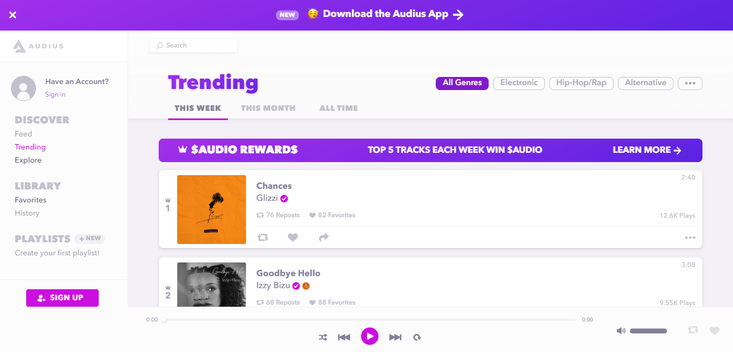
Source and Copyright: © Audius
Audius is a decentralized music streaming service built on blockchain technology. It allows artists to upload and timestamp their audio files. While its monetization approach is still in development, the platform offers "Audio" tokens, which can be traded on certain cryptocurrency exchanges.
Audius gives artists a space to upload, share, and potentially monetize their music. The use of smart contracts aims to ensure that royalty payments are distributed to artists based on set parameters.
The platform provides basic features for user engagement, such as music streaming, track favoriting, and playlist creation. It also offers direct artist-listener communication and feedback mechanisms. Additionally, its native cryptocurrency, "Audio" ($AUDIO), serves multiple purposes, from staking to platform governance.
#7 - Steemit
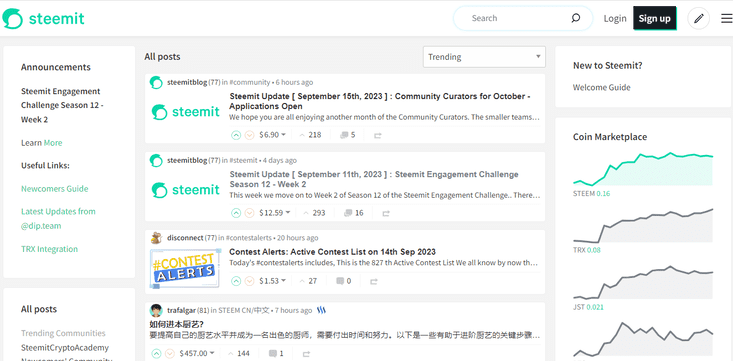
Source and Copyright: © Steemit
Steemit offers a decentralized social media experience by combining blogging with blockchain technology. Steemit was one of the first attempts to merge blockchain technology with social media.
Utilizing the Steem blockchain, Steemit lets its users post blogs, engage with content through upvotes and comments, and simultaneously earn Steem tokens as cryptocurrency rewards.
The more upvotes, the more rewards the content creator receives. Curators, or those who upvote and comment on other users' content, can also earn rewards. Unlike traditional social media platforms where revenue from ads goes to the company, Steemit distributes the majority of its ad revenue back to users in the form of its native cryptocurrency.Steemit users also can join various communities based on their interests, similar to Reddit's subreddits.
#8 - Mirror

Source and Copyright: © Mirror
Mirror is a decentralized publishing platform built on the Ethereum blockchain, designed for writers and creators to publish, monetize, and govern their work collaboratively.
Mirror also allows authors to transform their writing pieces into NFTs, initiate crowdfunding ventures, or establish a decentralized autonomous organization (DAO). Posting on Mirror.xyz feels akin to platforms like Medium or unrestricted WordPress sites. However, the difference lies in the ability to finance your projects through NFT sales or crowdfunding.
Mirror articles can embed and interact with smart contracts, enabling unique functionalities like dynamic content based on real-time on-chain data or direct interactions with DeFi protocols.
#9 - DiamondApp
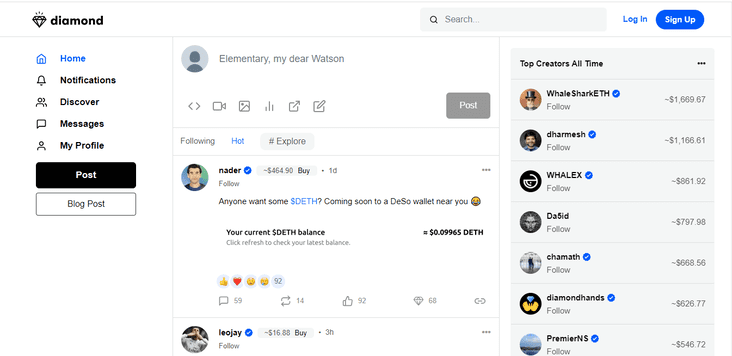
Source and Copyright: © DiamondApp
DiamondApp is a web3-based social networking platform. It's constructed atop the DeSo blockchain, a Layer 1 blockchain tailored to decentralize social media platforms.
The platform's distinction lies in its introduction of "creator coins" for each user. These coins symbolize a user's clout and standing within the platform. Users can purchase, trade, or retain these coins from any profile, fostering a mechanism for backing creators they support.
Diamond feature a social stream displaying trending posts and content from followed creators. Setting itself apart from typical Web 2.0 counterparts, "likes" on DiamondApp have tangible monetary value. The platform incorporates a "diamonds" tipping mechanism, enabling users to convey crypto to their favorite creators. Additionally, creators can transform their content into NFTs.
#10 - Bluesky
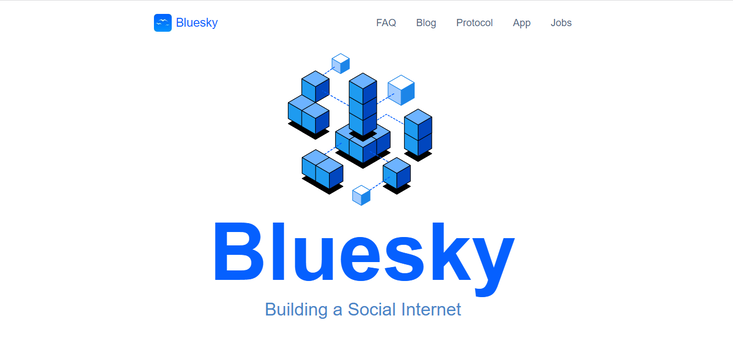
Source and Copyright: © Bluesky
Bluesky is a decentralized social media platform conceptualized by Jack Dorsey, the former CEO of Twitter. It's designed for users to post brief text and photo updates, interact through replies, and share posts from others. While currently in its beta phase, the platform mirrors much of Twitter's functionality and appearance.
What sets Bluesky apart is its use of an "open protocol," a departure from the traditional approach where social media platforms operate as isolated silos. In typical platforms like Twitter and Instagram, content is exclusive to its native platform and doesn't interoperate seamlessly with other networks.
Although Bluesky resonates with the look and feel of Twitter, allowing users to post messages up to 300 characters displayed on a newsfeed, its underlying system draws similarities to other platforms like Mastodon and Discord.
The genesis of Bluesky traces back to 2019 within Twitter under Dorsey's supervision, eventually branching out as a standalone entity the following year. This venture was initiated by Dorsey's tweet highlighting Twitter's intention to back a decentralized social media standard. Dorsey envisioned a compact, independent team dedicated to crafting this decentralized social media standard, with aspirations for Twitter to embrace this framework. Presently, Bluesky's access is limited to invited users as it undergoes evaluations.

Web3 Social Media Challenges
Yet, it's essential to note that decentralized social media platforms are still in their nascent stages compared to traditional centralized platforms. Even the most recognized decentralized social networks currently only garner a fraction of the active users of their centralized counterparts.
For instance, platforms such as X (former Twitter) and Reddit each have around half a billion active users, with others like Medium and Substack counting their users in the tens of millions. It's worth noting that social networks inherently rely on network effects—the more users, the more valuable the network becomes. Historically, people have leaned towards these platforms not necessarily due to their technological prowess or ideological underpinnings, but rather because of existing social connections.
FAQ
What is social media Web3?
Social media Web3 refers to decentralized social platforms built on blockchain technology, emphasizing user ownership, data control, and peer-to-peer interactions.
Why is Web3 important in social media?
Web3 offers enhanced user data privacy, reduced reliance on centralized entities, and the potential for users to monetize their content and online interactions directly.
How will Web 3.0 affect social media?
Web 3.0 is expected to transform social media by promoting decentralization, enhancing user control over data, and introducing new monetization models, potentially shifting the power dynamics from platform owners to users.















